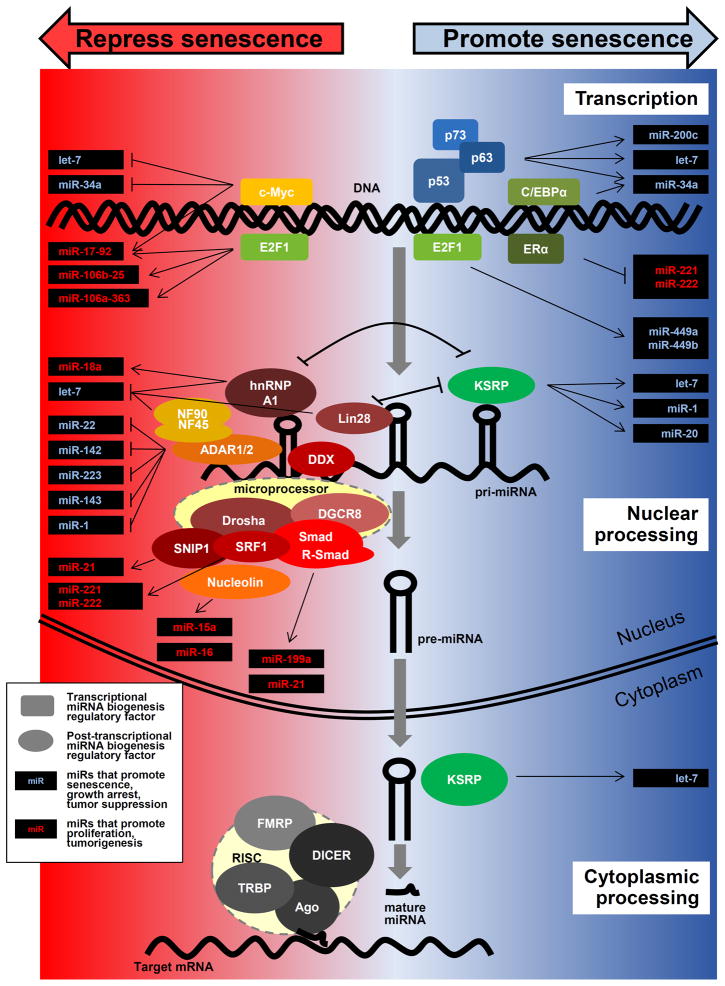Figure 1.
Schematic representation of microRNA biogenesis, depicting the senescence-associated factors involved. Top, transcriptional regulators of senescence-associated primary (pri)-miRNA biosynthesis (rectangles). Middle, regulators of pri-miRNA processing into pre-mRNAs, including components of the microprocessor complex (Drosha, DGCR8 and accessory factors, ovals). Bottom, regulators of pre-miRNA processing into mature miRNAs, particularly the components of the RISC and accessory proteins (ovals). On the right part of the schematic (blue background) are factors that mainly promote senescence, either by increasing the expression of growth-inhibitory, senescence-enhancing microRNAs (e.g., miR-34a or let-7, blue text) or by inhibiting the production of proliferative, growth-promoting, oncogenic miRNA (e.g., miR-221/miR-222, red text). On the left part of the schematic (red background) are factors that mainly repress senescence, either by promoting the expression of proliferative, oncogenic miRNAs (e.g., miR-21, the miR-17-92 cluster, red text) or by lowering the production of senescence-promoting miRNAs (e.g., miR-34a, let-7, miR-1, blue text).

